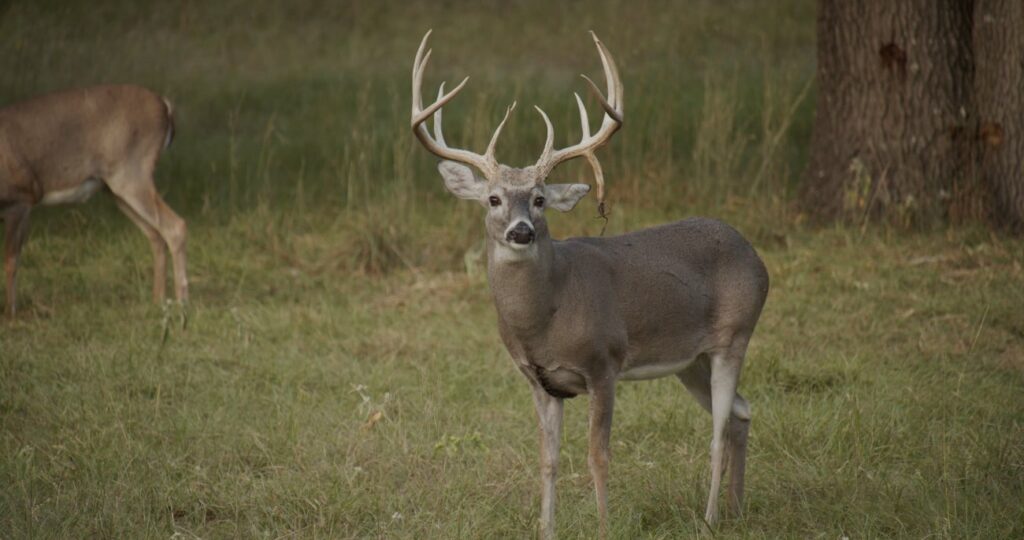By: Mark R. Matthews, Principal & Partner, Republic Ranches, LLC and Partner at Cuerno Grande Wildlife

Now that we are almost through deer season in Texas, I thought I would share a few observations I have made over the last 40 years of guiding hunters. Every year for the past 40 plus years I have hosted hunters of all ages and experience. We begin the hunt with an orientation to discuss issues like safety, hunting rules, hunter’s goals, and shot placement. I know the article title states “After the shot is fired”; however, most of the preparation should be done before the hunt.
Deciding what firearm to use can be difficult, hundreds of options are available and thousands of opinions exist. A few important aspects are consistent: quality of the firearm, quality optics, safe working conditions, being sighted in as well as being an appropriate rifle and caliber for the hunter and the target species. We require our hunters to shoot at the range before they hunt. One of my observations is that for every 10 hunters that shoot, 3 to 4 rifles need to be adjusted and 1 to 2 rifles will not be allowed to be used due to the inability of the rifle and shooter to group at least a 2” group. In those instances, the hunter is given a camp rifle to use for the hunt. What are our camp rifles? Our favorite caliber, unsuppressed, is a .308 Winchester I will save that argument, I mean discussion, for another article.
During the orientation, we spend a lot of time on shot placement. Our strongly suggested aim point is the high-shoulder. We explain how to find the aim point on the animal and we use a photograph of a cross-section of a white-tailed deer carcass and videos of hunters shooting at deer to make our point. We prefer this aim point because the shot quickly kills the animal and it does not run. However, not all of our hunters shoot the deer in the high shoulder. The reasons for this range from too many years of using another shot to lack of ability due to poor shooting habits or lack of practice. We have observed over the years that our first time hunters almost always are successful at “dropping” their deer while the seasoned hunters is where tracking opportunities arise.
So now that the shot has been fired and the deer is not laying there, what should you do? My suggestions for my guides are as follows:
1) Mark the time of the shot.
2) Mentally mark the impact spot and the direction and trail the animal left on.
3) Wait 30 minutes before approaching the impact spot.
4) Approach the impact spot with an unloaded firearm.
5) Look for signs at the impact spot; blood, hair, bone fragments, “dig out” tracks, they are clues to where the bullet hit the animal. Some examples are: Abundant red blood deer was hit in a vascular area and open wound; hair only can mean several things and may signal a difficult retrieval; bone fragments can come from a leg wound, bright pinkish and frothy blood comes from from the lungs; stomach contents means a “gut” shot and no visual sign means you have to track using the “dig out” tracks until you find first blood.
6) Initially do not track the deer for more than 100 yards and then assess the next move. If the deer was hit in an area that would kill the animal within 30 minutes it should be found within 100 yards. If the deer is not found within 100 yards of the impact spot, then your choices are wait for several more hours to continue, engage a professional tracker with trained dogs (not your friend’s pet) or leave the area and continue to hunt the animal in future hunts. Deer with superficial wounds may come back to the same area. We use trail cameras to help locate wounded deer. Continuing to track the deer further than 100 yards initially is not advised because of the risk of “jumping” the wounded animal may make it more difficult to retrieve the animal. This is a common mistake due to the strong desire to look a little further.
Hunters can greatly improve their chances of retrieving their deer by being prepared before the hunt. Practice shooting throughout the year and knowing your rifle is accurate. Hunting with the correct caliber and bullet is important. In the past several years, we have observed many issues with new calibers and inappropriate loads for hunting. Many of these new calibers and bullets have not been properly field tested. We have observed hunters shooting for over 40 years and I am convinced that 99% of misplaced shots are initiated by the shooter closing the shooting eye before the trigger pull.
Safe hunting and good luck!